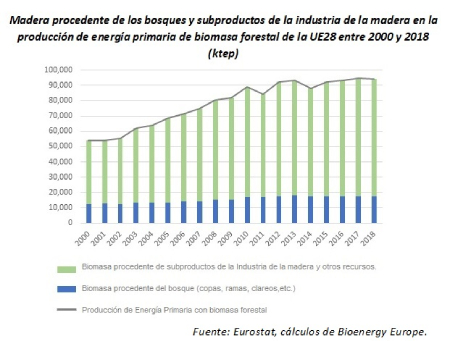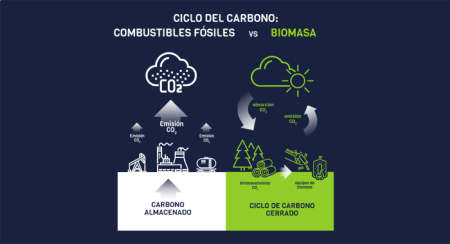Biomass
Bioenergy Europe responds to an Argos study in defense of biomass

A pioneering sector in establishing and respecting strict sustainability criteria in its supply chain, bioenergy has become the only energy source legally affected by mandatory sustainability criteria, something that is not found in an equivalent manner in any another energy, material or food product, and that automatically positions it in the eye of the analysis that may arise from the REDII implemented by the European Community that will begin to be taken into account in mid-2021.
Carriers of extraordinary guarantees in the use of biomass as a source of energy for European citizens, the sector welcomed these criteria with satisfaction and responsibility from the first moment, as they consolidated the role of bioenergy in mitigating climate change and conveyed peace of mind to users and investors.
However, after the presentation of the “Money to burn” carried out by different European journalists and news agencies and promoted by Argos, a collaboration between Human and VPro, the different associations have felt the need to clarify and deny certain statements promulgated by the first ones.
The EU endorses the use of sustainably obtained woody biomass as a source of renewable energy.
First of all, the REDII considers that woody biomass is a source of renewable energy, both that which comes from waste from the wood industry and that obtained directly from forestry harvests. And this is because in Europe there is rigorous control over the supply of wood and biomass to the industry that guarantees its sustainability.
The use of bioenergy in no case leads to deforestation. In fact, it contributes to the exact opposite.
Forests grow trees that are too small, deformed or diseased to be used by wood processing industries, but that can be used to generate energy sustainably.
The president of AVEBIOM, Javier Díaz, considers that removing these trees “is totally necessary to maintain forest masses in optimal conservation conditions, store and sequester carbon continuously and reduce the volume of fuel likely to facilitate or aggravate the feared fires. forests or pests.
The forestry sector is clear that using low-value trees to generate renewable energy that replaces fossil fuels makes it possible to pay for part of the work to improve European forest masses in the medium and long term.
According to the latest FAO figures, the area of European forests has increased by 47% since 1990: in the last 30 years, forest cover has expanded by 482,000 hectares annually. This is equivalent to 1.3 football fields per minute.
The bioenergy sector is an example of a circular bioeconomy
To continue, the bioenergy industry is part of a very complex value chain with strong links to forestry activities. In this sense, the bioenergy sector is an example of an effective bioeconomy, which generates environmental and socioeconomic benefits in rural areas.
The use of biomass has increased over recent decades thanks to the more efficient use of waste and byproducts from forestry industries.
A fact that some European disseminators and lobbies are unaware of is that the percentage of use of wood for energy purposes has remained stable over time: the use of firewood in inefficient equipment has evolved in a few years to a modern use of standardized biomass in equipment. automated and highly efficient.

Emissions from fossil fuels are very negative for the climate compared to those caused by biomass.
Thirdly, the fundamental difference between the two energy sources is the carbon cycle. While burning fossil fuels introduces additional carbon into the atmosphere that cannot be fully absorbed by natural sinks, emissions due to the combustion of biomass from sustainable forest management are offset by the growth of the trees where the fuel was produced.
Some newspaper articles suggest that forestry waste should be left on the ground to decompose slowly, which is absurd, since the CO2 will still end up in the atmosphere and without replacing the harmful emissions generated by fossil fuels.

The importance of biomass in the energy transition in the EU28
Finally, biomass is the largest source of renewable energy in Europe: it currently contributes 60% of all renewable energy consumption in the EU, which represents 10. 3% of total energy consumption.
It is indispensable in the transition away from fossil fuels in the electricity and heating sectors: in 2018, bioenergy in the EU28 recorded 310 MtCO2 eq in emissions savings, equivalent to around 7% of GHG emissions in that anus.
Oversimplification of scientific knowledge and disinformation campaigns such as “Cash to Burn” regarding such a complex value chain will not only have a detrimental effect on the sector, but on the EU's ongoing effort to phase out fossil fuels.
